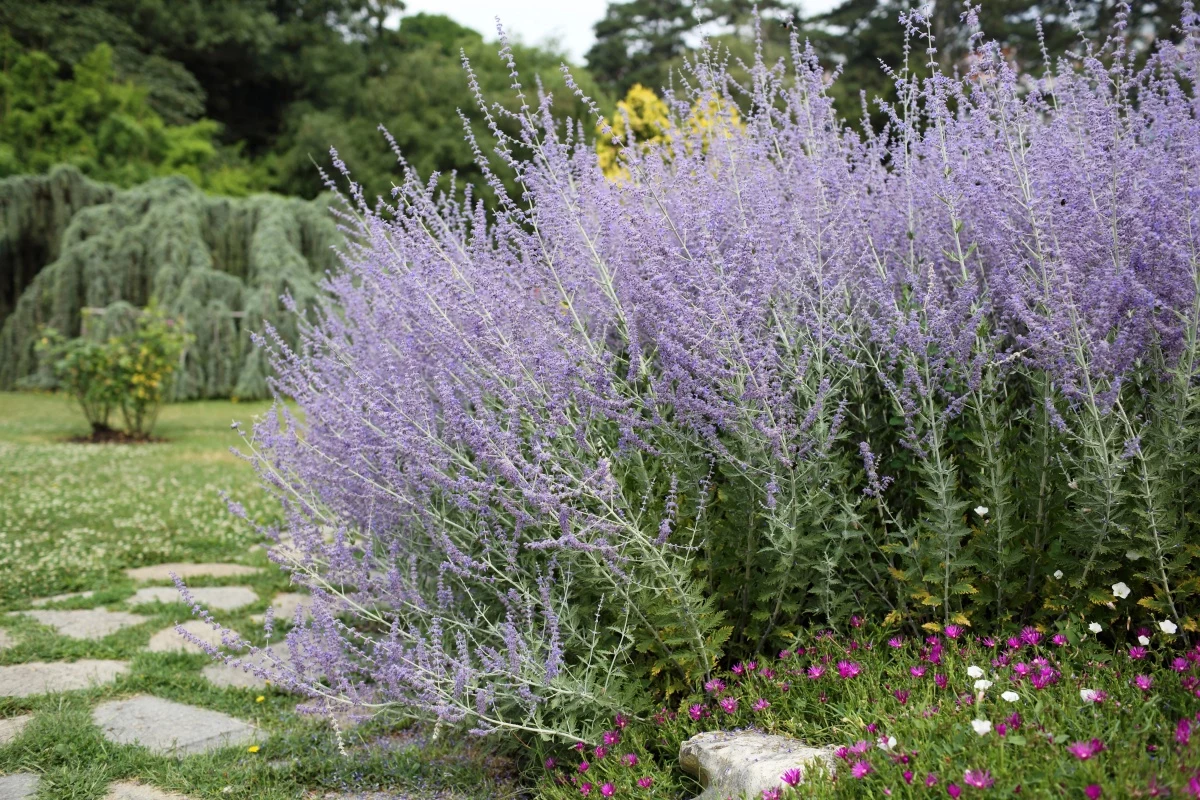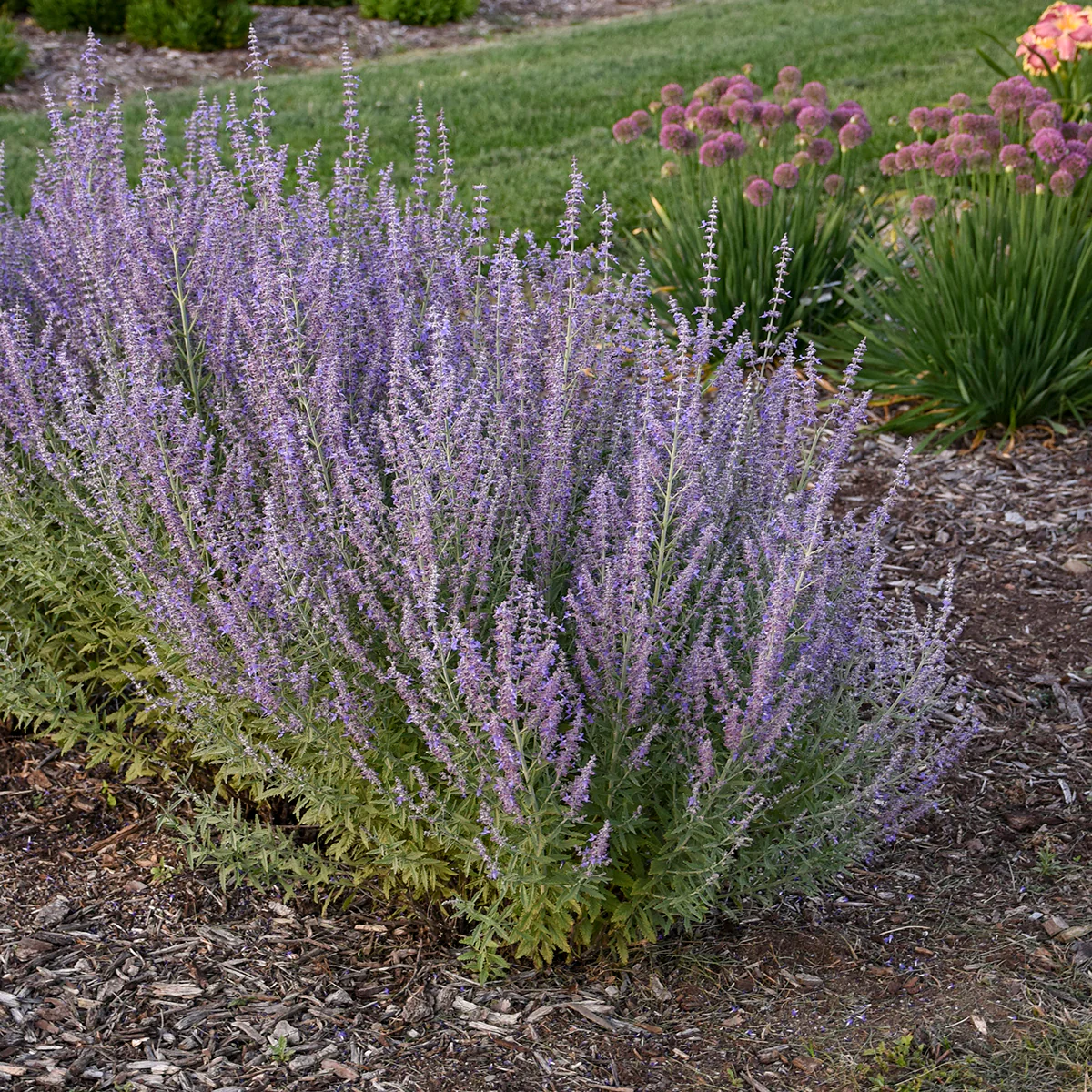How To Winterize Russian Sage: Expert Tips For Protecting Your Plant
As the golden hues of autumn give way to winter’s crisp frosts, gardeners are beckoned to prepare their cherished plants for the colder months ahead. Winterization is not just a routine task. It’s a vital act of care that ensures the resilience and vitality of your garden through the frigid season. Among the many plants in need of winter nurturing is the Russian sage – a perennial favorite known for its fragrant, lavender-blue blooms and silvery foliage. With its origins in the harsh climates of Central Asia, Russian sage is no stranger to the cold, but a little extra attention can help it emerge in spring more vibrant than ever. In this guide, we’ll walk you through the steps to properly winterize your Russian sage, ensuring that it continues to grace your garden with its ethereal beauty. Here is how to winterize Russian sage like a pro.
We will show you how to easily winterize Russian sage
In this article
How To Winterize Russian Sage
Russian sage, with its hardy nature and elegant poise, stands as a testament to the resilience of perennials. As winter approaches, these plants require some preparation to ensure they withstand the cold and reemerge with vigor come spring. Winterizing Russian sage involves a few key steps: pruning, mulching, and, if necessary, providing extra protection from the harsh elements. This process not only safeguards the plant against the chill but also encourages more robust growth in the warmer months. Let’s delve into the specifics of how to equip your Russian sage for the winter, ensuring that its beauty endures and thrives in your garden’s wintry landscape.
These plants require some preparation to ensure they withstand the cold
Pruning
As the vibrant colors of autumn start to fade, it’s time to focus on pruning your Russian sage. This step is crucial in preparing the plant for the colder months. By cutting back the stems to about six inches above the ground, you not only tidy up your garden but also encourage the plant to concentrate its energy on strengthening its roots. This pruning process promotes healthier, more robust growth when spring arrives. It’s about more than just maintaining aesthetics. It’s a proactive measure to enhance the plant’s overall health and resilience. Pruning also helps to control the size and shape of your Russian sage, ensuring it fits well within your garden’s design. By doing this annually, you ensure that your Russian sage remains a vibrant and integral part of your garden year after year.
This step is crucial in preparing the plant for the colder months
Mulching
After pruning, the next crucial step is to apply a layer of mulch around the base of your Russian sage. This layer acts as a protective blanket, safeguarding the roots from the harsh realities of winter. Mulching helps to regulate soil temperature and moisture levels, preventing the ground around the roots from freezing and thawing rapidly, which can be damaging. Organic materials like straw or bark chips are ideal for mulching as they not only insulate but also enrich the soil as they decompose. This addition of nutrients to the soil is beneficial for the overall health of the plant. A good layer of mulch also helps in suppressing weed growth, reducing competition for nutrients and water. Thus, mulching is a multifaceted approach to caring for your Russian sage during the winter months.
Mulching helps to regulate soil temperature and moisture levels
Watering
Before the first freeze sets in, it’s important to give your Russian sage a thorough watering. This deep watering helps the plant to enter its dormancy period with enough moisture in its system, which is crucial for its survival during the cold, dry winter months. Proper hydration at this stage can reduce the risk of the plant’s roots desiccating, which can be fatal. It’s about striking the right balance – ensuring the plant has enough water to sustain itself while avoiding overwatering, which can lead to root rot. This preparatory step is often overlooked, but it is vital for maintaining the health of your Russian sage, helping it to emerge strong and vibrant in the spring.
Deep watering helps the plant to enter its dormancy period
Protecting from extreme cold
In regions where winters are particularly harsh, your Russian sage may require additional protection. Covering the plant with a burlap sack or garden fleece can provide a much-needed barrier against extreme cold, biting winds, and heavy snow. This extra layer helps to mitigate the stress caused by severe weather conditions, protecting the crown and roots from potential damage. It’s important to secure the covering properly so that it stays in place but is not so tight that it hinders air circulation. This additional step in winterizing your Russian sage can be the difference between a plant that survives the winter and one that thrives in the following growing season.
This extra layer helps to mitigate the stress caused by severe weather conditions
Monitoring
Throughout the winter, it’s important to keep a vigilant eye on your Russian sage and the prevailing weather conditions. After heavy snowfall, take the time to gently brush off the snow from the plants. This prevents the branches from breaking under the weight of the snow. Additionally, if there are periods of unusual warmth, check the state of the mulch and adjust it if necessary to ensure consistent coverage and protection. Monitoring your Russian sage during winter involves being responsive to the plant’s needs and the changes in the environment. This careful attention helps to ensure that your plant remains healthy throughout the winter, ready to grow anew in the spring.
Monitoring your Russian sage during winter involves being responsive to the plant’s needs
Winterizing your Russian sage is more than a gardening chore. It’s a ritual that marks the transition of seasons and a testament to the cyclical nature of growth. By taking these steps to prepare your sage for winter, you’re setting the stage for a splendid show in the warmer months. Come spring, your Russian sage will reward your efforts with its graceful stature and aromatic blooms, a symbol of resilience and renewal in your garden. So, as the chill of winter settles in, take comfort in knowing that your Russian sage is snug and secure, dreaming of the spring to come.
Now you know how to winterize Russian sage like a pro


















